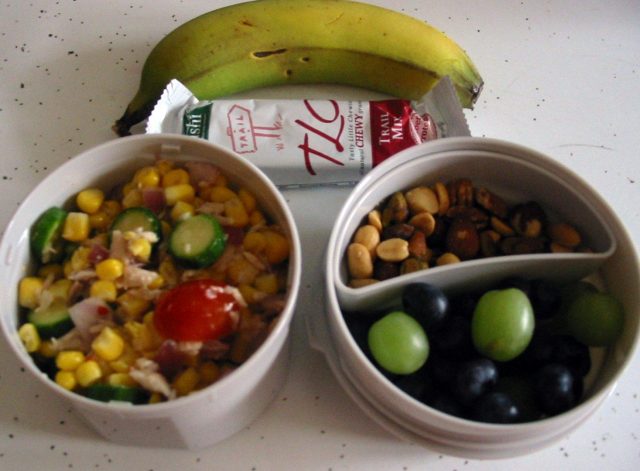In today’s fast-paced world, finding a sustainable and nutritious way to eat can feel overwhelming. You might be striving to make healthier choices, reduce your environmental impact, or simply diversify your meals without completely giving up the foods you love. If this sounds familiar, adopting a flexitarian diet might be the perfect solution for you. This approach offers a flexible and balanced way to enjoy the benefits of plant-based eating while still allowing room for your favorite animal products. In this article, we’ll guide you through the essentials of following a flexitarian diet, helping you to achieve balanced nutrition with empathy and understanding. Whether you’re looking to make a major lifestyle change or just curious about incorporating more plant-based meals into your routine, we’re here to support you every step of the way.
Understanding the Flexitarian Philosophy for Better Health
The flexitarian diet is more than just a trend; it’s a lifestyle choice that combines the best of both worlds—plant-based meals with the occasional inclusion of meat. This approach not only supports ethical and environmental considerations but also emphasizes the importance of consuming a wide variety of nutrients.
To embark on this journey, start by increasing your intake of fruits, vegetables, legumes, and whole grains. These foods are rich in essential vitamins and minerals, helping to maintain optimal health. Here’s how you can incorporate these into your daily routine:
- Breakfast: Swap your usual cereal for a hearty bowl of oatmeal topped with fresh fruits and nuts.
- Lunch: Opt for a colorful salad with chickpeas, quinoa, and a variety of leafy greens.
- Dinner: Try a vegetable stir-fry with tofu or a black bean burger for a satisfying meal.
Balance is key in a flexitarian diet. To help you maintain this balance, here’s a simple table outlining some protein options and their benefits:
| Protein Source | Benefits |
|---|---|
| Lentils | High in fiber, supports heart health |
| Eggs | Rich in B vitamins and choline |
| Chicken | Lean protein, aids muscle growth |
By understanding and embracing the flexitarian philosophy, you can enjoy a diverse and nutritionally balanced diet that caters to both your health and ethical values. Remember, flexibility is at the heart of this diet, allowing you to adapt and thrive while making mindful food choices.
Creating Balanced Meals with Plant-Based Ingredients
Embracing a flexitarian diet can be a delightful journey of discovering vibrant flavors while maintaining balanced nutrition. Plant-based ingredients offer a wide array of nutrients, allowing you to create meals that are both nourishing and satisfying. Here’s how you can craft a balanced meal with plant-based foods:
- Protein Power: Incorporate legumes like lentils, chickpeas, and black beans. Not only are they rich in protein, but they also provide essential fibers.
- Colorful Veggies: Add a rainbow of vegetables to your plate. Think bell peppers, carrots, and spinach. Each color brings its own set of vitamins and minerals.
- Whole Grains: Opt for quinoa, brown rice, or farro. These grains offer complex carbohydrates that provide sustained energy throughout the day.
- Healthy Fats: Include sources like avocados, nuts, and seeds. They are not only heart-healthy but also enhance the absorption of fat-soluble vitamins.
To help visualize a balanced meal, consider the table below:
| Component | Example |
|---|---|
| Protein | Grilled Tofu |
| Vegetables | Steamed Broccoli & Carrots |
| Whole Grains | Quinoa |
| Healthy Fats | Avocado Slices |
By thoughtfully combining these elements, you not only meet your nutritional needs but also enjoy meals that are diverse and delectable. Remember, the key is balance and variety, allowing your taste buds to explore the richness of plant-based cuisine.

Incorporating Occasional Meat for Nutritional Variety
Embracing a flexitarian diet doesn’t mean completely eliminating meat from your meals. Instead, it offers the freedom to enjoy meat on occasion, ensuring that your nutritional intake remains diverse and balanced. Including meat sporadically can provide essential nutrients such as vitamin B12, iron, and zinc, which are sometimes less abundant in plant-based foods. Here’s how you can thoughtfully incorporate meat into your diet while maintaining the flexitarian ethos:
- Quality over quantity: Choose organic, grass-fed, or free-range options to ensure higher nutritional value and better ethical standards.
- Focus on lean cuts: Opt for lean cuts of meat like chicken breast, turkey, or fish, which are lower in saturated fats and rich in protein.
- Moderation is key: Plan meals with meat around once or twice a week, allowing plant-based foods to remain the primary focus of your diet.
| Meat Type | Nutritional Highlight | Suggested Serving |
|---|---|---|
| Chicken Breast | High in Protein | 100g |
| Salmon | Rich in Omega-3 | 150g |
| Beef (Lean Cut) | Iron & Zinc | 75g |
By mindfully selecting and consuming meat, you can enrich your diet with essential nutrients while still prioritizing plant-based meals. This balanced approach supports overall health and aligns with the sustainable principles of a flexitarian lifestyle.

Practical Tips for a Sustainable Flexitarian Lifestyle
Embracing a flexitarian lifestyle can be a rewarding journey towards balanced nutrition and a healthier planet. To make the transition smoother, consider incorporating some practical strategies into your daily routine. Here are a few tips to help you maintain a sustainable flexitarian lifestyle:
- Plan Your Meals: Organize your meals in advance to ensure a variety of plant-based foods while occasionally including meat. This not only helps in achieving nutritional balance but also reduces food waste.
- Stock Up on Staples: Keep your pantry filled with whole grains, legumes, nuts, seeds, and seasonal fruits and vegetables. These ingredients are versatile and form the foundation of many flexitarian dishes.
- Experiment with Meat Alternatives: Try plant-based proteins like tofu, tempeh, or lentils. They are not only nutritious but also offer new flavors and textures to your meals.
It’s essential to strike a balance between plant-based and animal-based foods to ensure you are getting all the nutrients your body needs. Below is a simple table illustrating how to balance your weekly meals:
| Day | Plant-Based Meals | Meat-Based Meals |
|---|---|---|
| Monday | 3 | 0 |
| Tuesday | 2 | 1 |
| Wednesday | 3 | 0 |
| Thursday | 2 | 1 |
| Friday | 3 | 0 |
| Saturday | 2 | 1 |
| Sunday | 3 | 0 |








































